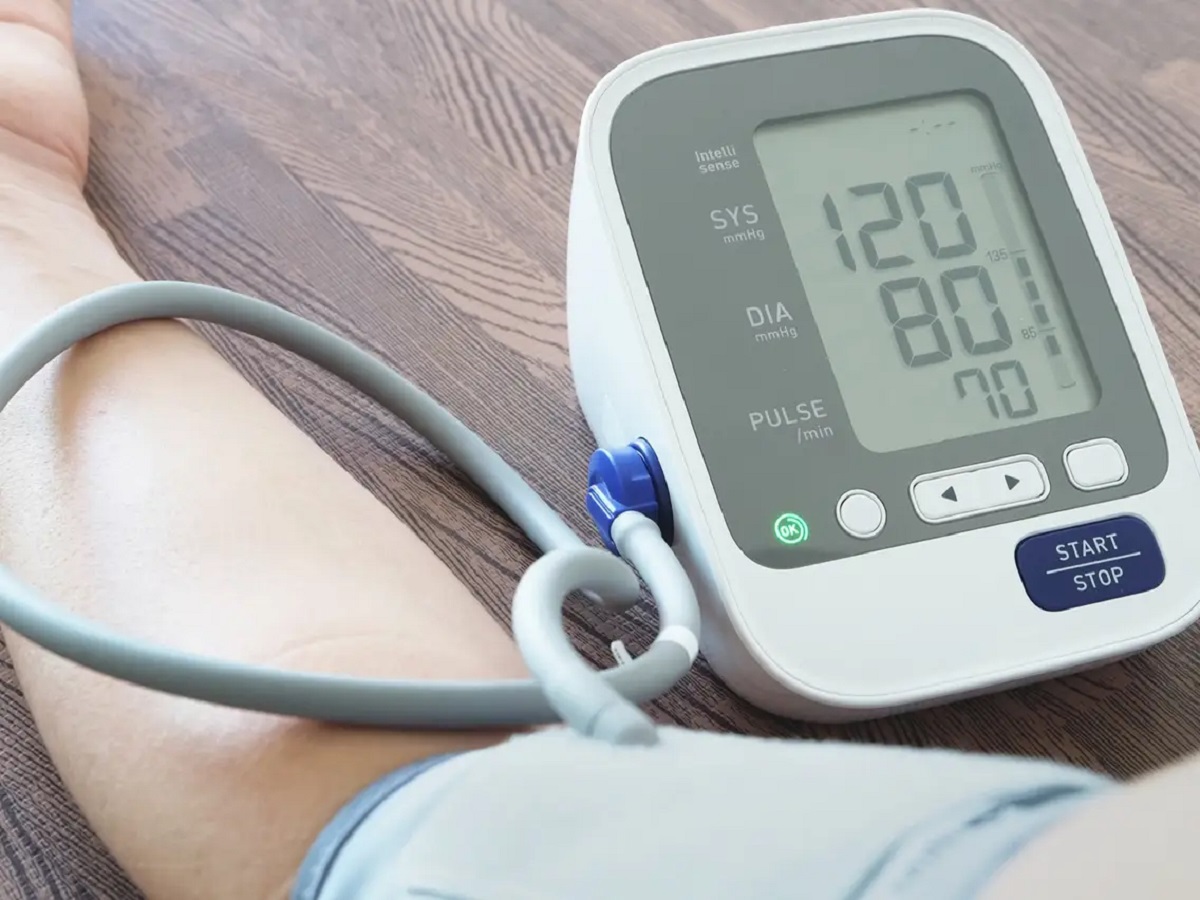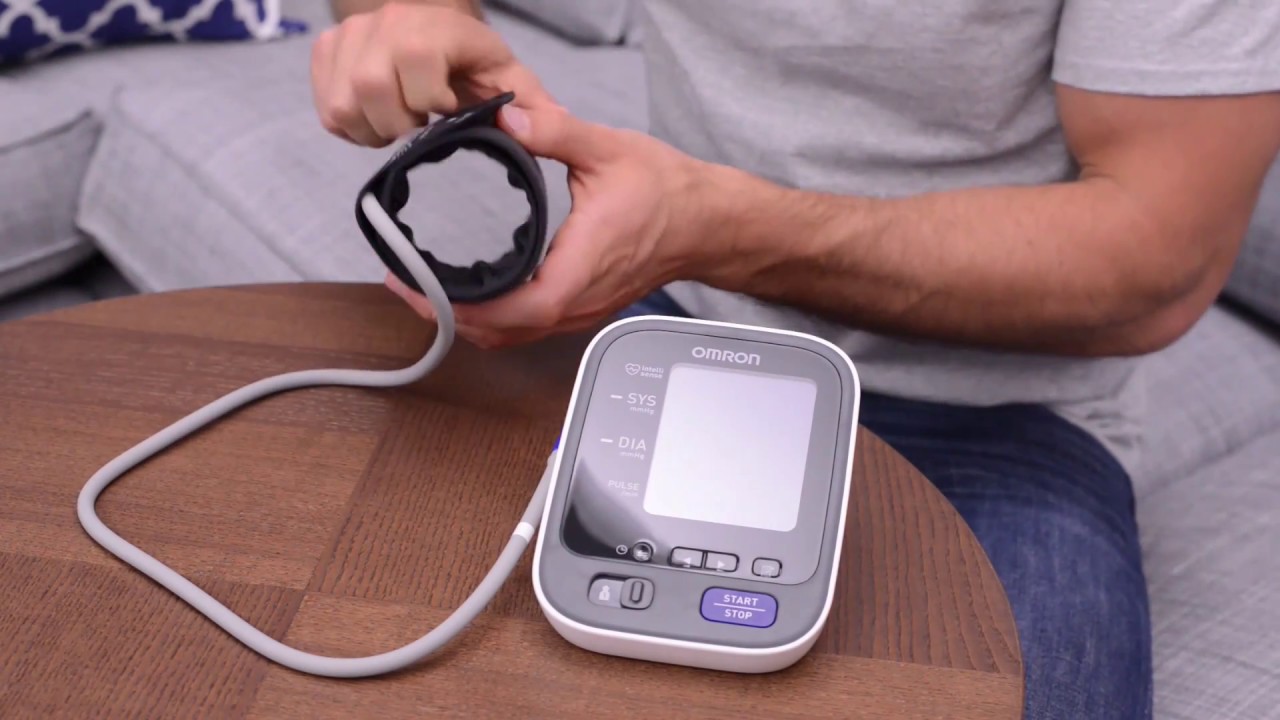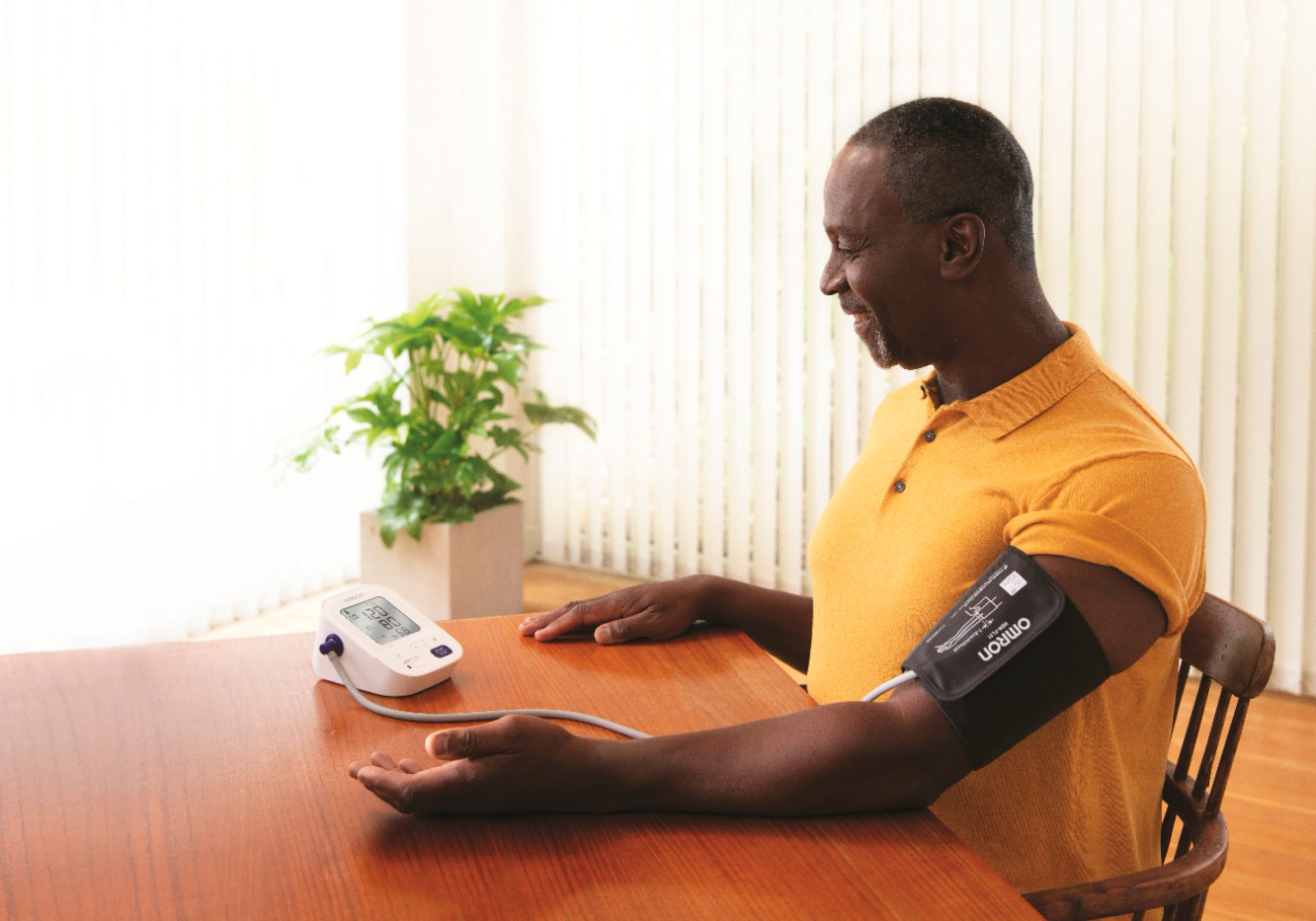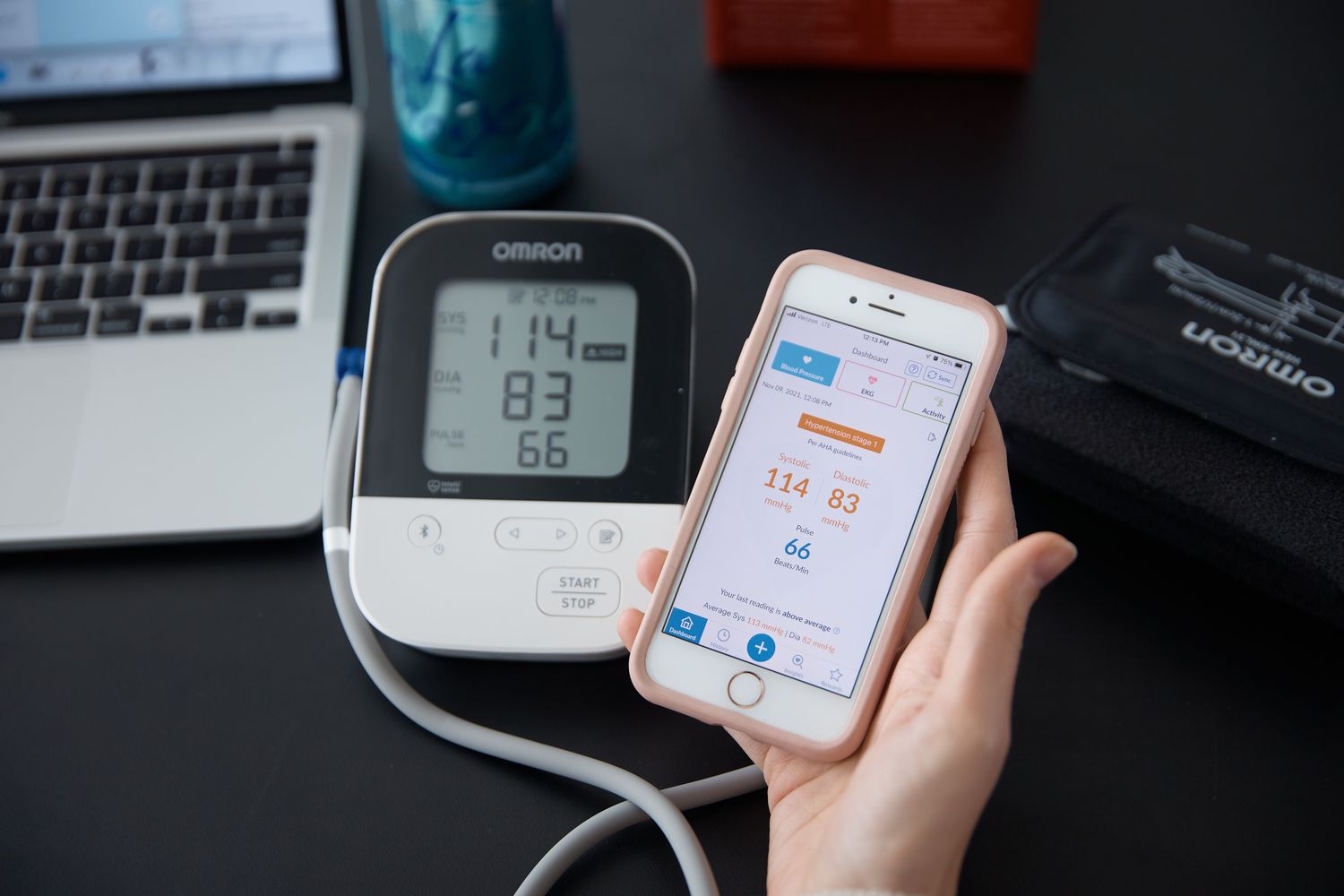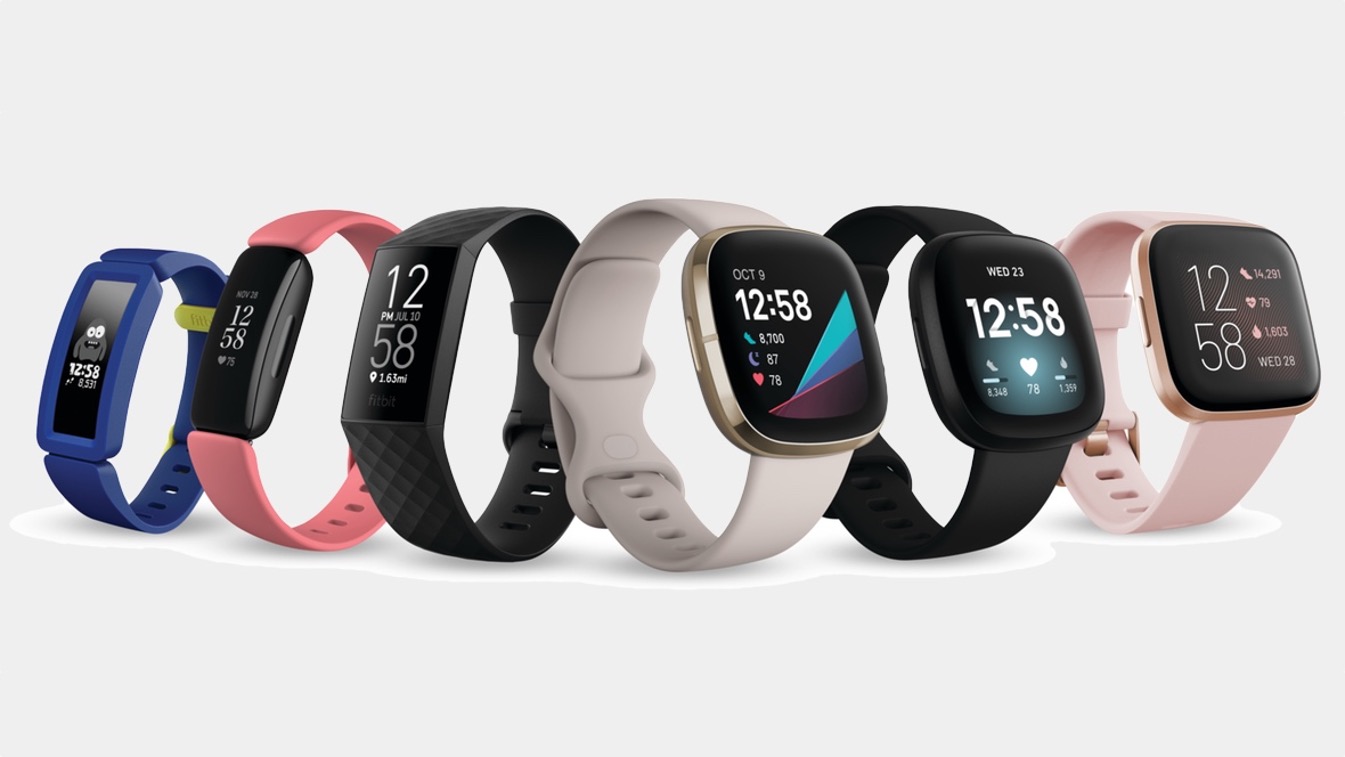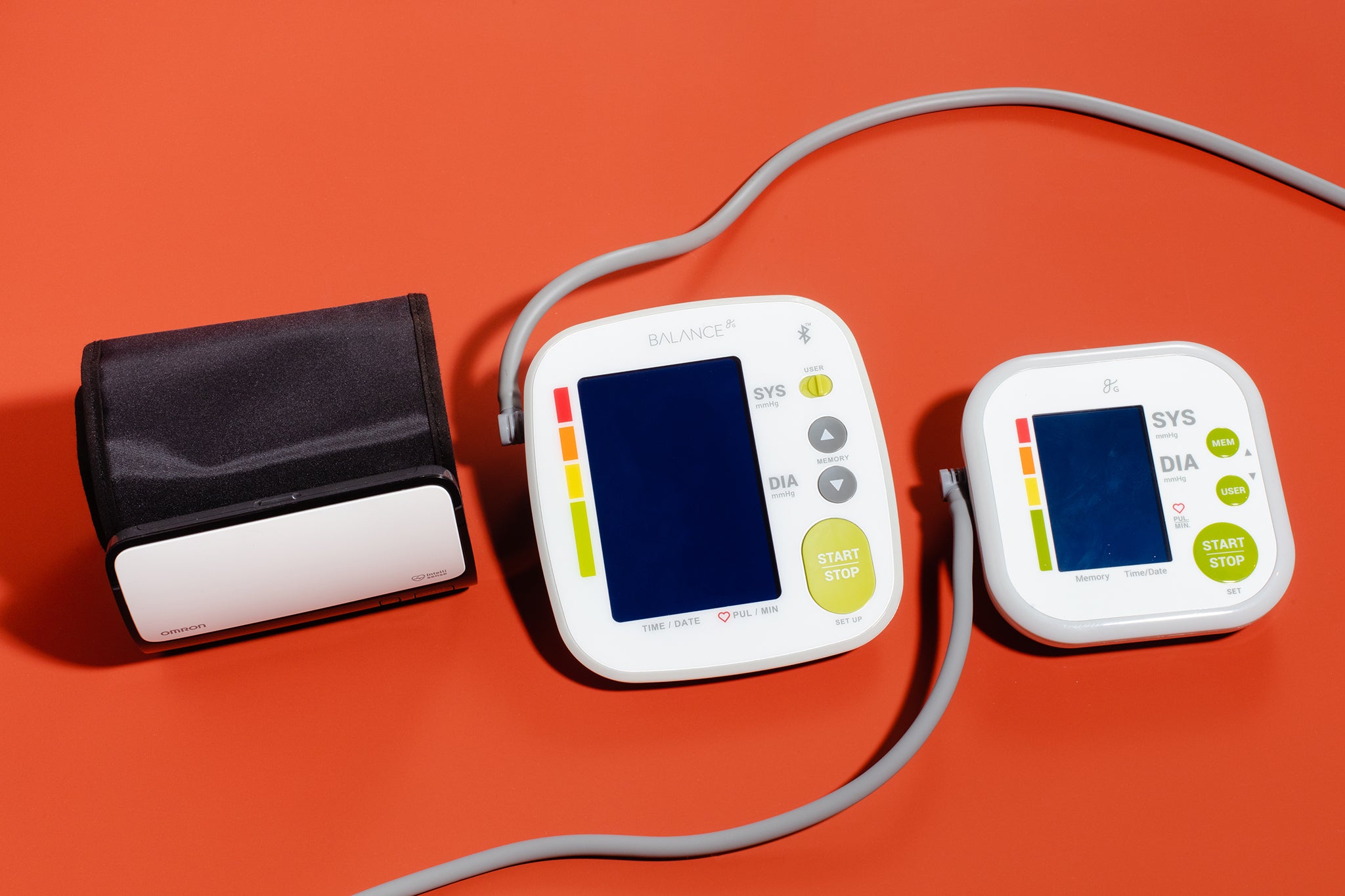Introduction
Welcome to this guide on how to read a blood pressure monitor. Monitoring your blood pressure is an essential part of maintaining your health and preventing potential complications associated with hypertension or hypotension. Whether you have just purchased a blood pressure monitor or are looking to gain a better understanding of how to read the measurements accurately, this article will provide you with the necessary information and step-by-step instructions.
High blood pressure, also known as hypertension, affects millions of people worldwide and is a significant risk factor for cardiovascular diseases. On the other hand, low blood pressure, or hypotension, can cause symptoms like dizziness and fainting.
By monitoring your blood pressure regularly, you can keep track of any fluctuations and take appropriate actions to maintain optimal health. A blood pressure monitor is a simple and effective device that allows you to measure your blood pressure in the comfort of your own home.
Understanding how to read the measurements on your blood pressure monitor is crucial for accurate tracking and interpretation. This guide will not only cover the reading process but also provide helpful tips on how to properly position yourself during measurement, interpret the results, troubleshoot potential errors, and maintain your blood pressure monitor.
Before we dive into the details, it’s important to note that while monitoring your blood pressure at home can be helpful, it is not a substitute for regular check-ups with your healthcare professional. If you have any concerns about your blood pressure readings or have been diagnosed with hypertension or hypotension, always consult with your doctor or medical professional for the best course of action.
Understanding Blood Pressure
Before we delve into the specifics of reading a blood pressure monitor, it’s essential to have a basic understanding of what blood pressure is and how it is measured. Blood pressure refers to the force exerted by the blood against the walls of your arteries as your heart pumps it throughout your body.
Blood pressure readings consist of two numbers displayed in millimeters of mercury (mmHg). The first number, known as systolic pressure, represents the pressure in your arteries when your heart contracts and pumps blood. The second number, known as diastolic pressure, represents the pressure in your arteries when your heart is at rest between beats.
The American Heart Association classifies blood pressure into different ranges:
- Normal: Systolic less than 120 mmHg and diastolic less than 80 mmHg.
- Elevated: Systolic between 120 and 129 mmHg and diastolic less than 80 mmHg.
- Hypertension Stage 1: Systolic between 130 and 139 mmHg or diastolic between 80 and 89 mmHg.
- Hypertension Stage 2: Systolic 140 mmHg or higher or diastolic 90 mmHg or higher.
- Hypertensive Crisis: Systolic higher than 180 mmHg and/or diastolic higher than 120 mmHg.
Understanding these ranges is crucial in interpreting your blood pressure measurements accurately. It is important to note that individual optimal blood pressure levels may vary based on factors such as age, gender, and medical history.
Regular monitoring of your blood pressure can help you identify any changes in your readings and provides valuable information that can be shared with your healthcare provider during check-ups. It is advisable to record your blood pressure readings along with the date and time to establish patterns or trends that may require medical attention.
Now that we have a grasp on the fundamentals of blood pressure, let’s move on to explore the different types of blood pressure monitors available in the market and discuss how to choose the right one for you.
Types of Blood Pressure Monitors
When it comes to monitoring your blood pressure, there are several types of blood pressure monitors to choose from. Each type offers its own unique features and benefits, allowing you to find the one that best suits your needs. Here are the most common types of blood pressure monitors:
- Upper Arm Blood Pressure Monitors: These are the most widely used and recommended blood pressure monitors. They consist of a cuff that wraps around your upper arm and an electronic monitor that displays the readings. Upper arm monitors provide accurate and reliable measurements when positioned correctly.
- Wrist Blood Pressure Monitors: Designed to be wrapped around the wrist, these monitors are compact and portable. They offer convenience and ease of use, making them a popular choice for people on the go. However, wrist monitors may be less accurate than upper arm monitors, and positioning is crucial for obtaining reliable readings.
- Smartphone Blood Pressure Monitors: With advancements in technology, you can now find blood pressure monitors that connect to your smartphone via Bluetooth. These monitors typically come with an app that allows you to track and analyze your blood pressure readings conveniently. Smartphone monitors offer the advantage of data storage and analysis, making it easier to monitor your progress over time.
- Manual Blood Pressure Monitors: Also known as aneroid monitors, manual blood pressure monitors are operated by hand. They consist of a cuff, a stethoscope, and a gauge to measure your blood pressure. Manual monitors require training and practice to accurately read and interpret the measurements. They are commonly used by healthcare professionals, but some individuals may prefer them for personal use.
- Automatic Blood Pressure Monitors: These monitors are similar to upper arm monitors, but they automatically inflate and deflate the cuff to take the measurement. Automatic monitors are user-friendly and provide quick and effortless readings. They typically display the measurements digitally and may store previous readings for easy reference.
When choosing a blood pressure monitor, consider factors such as accuracy, ease of use, cuff size, memory storage, and additional features like irregular heartbeat detection or multiple user profiles. It is also important to ensure the monitor is validated and approved by regulatory authorities to ensure reliability and accuracy.
Now that you are familiar with the different types of blood pressure monitors available, it’s crucial to read and understand the user manual provided with your specific monitor. The user manual will provide detailed instructions on how to operate the monitor correctly and position yourself during measurement, ensuring accurate results. This will be discussed in the following section.
Reading the User Manual
Before using your blood pressure monitor, it is essential to read and understand the user manual provided with the device. The user manual contains valuable information on how to operate and maintain your specific monitor, ensuring accurate and reliable readings. Here are some key points to consider when reading the user manual:
- Setup Instructions: The user manual will provide step-by-step instructions on how to set up your blood pressure monitor. This may include inserting batteries, connecting the cuff to the monitor, or linking it to a smartphone app if applicable.
- Cuff Sizing: Proper cuff sizing is crucial for accurate blood pressure readings. The user manual will guide you on how to measure your arm to determine the correct cuff size for your monitor. It is important to use the appropriate cuff to ensure reliable measurements.
- Operating Instructions: The manual will explain how to use the monitor, including turning it on and off, selecting the appropriate settings, and navigating through the menu options if applicable. It will also outline any specific instructions for a particular monitor model.
- Positioning Instructions: Proper positioning during blood pressure measurement is essential for accurate readings. The user manual will provide guidance on how to position your arm, cuff, and body to obtain reliable results. It may include illustrations or diagrams to illustrate the correct positioning.
- Measurement Techniques: The manual will outline the recommended measurement techniques, such as sitting quietly for a few minutes before taking a reading, keeping your arm relaxed and supported, and avoiding talking or moving during measurement.
- Interpreting the Results: The user manual may include a section on interpreting the blood pressure readings. It will explain the significance of the systolic and diastolic numbers and provide guidance on what is considered normal, elevated, or hypertensive readings based on recognized guidelines.
- Maintenance and Care: Proper maintenance and care are essential for the longevity and accuracy of your blood pressure monitor. The manual will provide instructions on how to clean and store your monitor, how often to replace batteries or cuffs, and any maintenance procedures specific to your device.
- Troubleshooting: The user manual may also include a troubleshooting guide to help you resolve common issues or error messages that may arise during measurement. It will provide solutions or recommendations to ensure accurate readings and proper functioning of the monitor.
Take the time to thoroughly read and understand the user manual before using your blood pressure monitor. Pay close attention to the specific instructions for your device model to ensure accurate measurements and proper maintenance. Familiarizing yourself with the user manual will help you make the most of your blood pressure monitor and ensure accurate readings.
Preparing for Measurement
Proper preparation is essential to ensure accurate and reliable blood pressure measurements. Before measuring your blood pressure, there are a few key steps to follow to ensure optimal results. Here’s how you can prepare for a blood pressure measurement:
- Choose the Right Time: It is crucial to measure your blood pressure when you are calm and relaxed. Avoid measuring your blood pressure immediately after physical exertion, consuming caffeine or nicotine, or feeling stressed. Find a quiet and comfortable place where you can sit and relax for a few minutes before starting the measurement.
- Empty Your Bladder: A full bladder can potentially affect blood pressure readings, so it is advisable to empty your bladder before measuring your blood pressure. This will help ensure accurate results without any external factors potentially influencing the readings.
- Avoid Certain Factors: To obtain accurate readings, it is advisable to avoid factors that can temporarily increase or decrease your blood pressure. These can include consuming alcohol, engaging in vigorous physical activity, smoking, or consuming a large meal. Try to minimize these factors for at least 30 minutes to an hour before measuring your blood pressure.
- Rest and Relax: Take a few minutes to rest and relax before starting the measurement. Sit quietly in a comfortable chair with your back supported and feet flat on the floor. Ensure that your arm is supported at heart level, either by resting it on a table or using an armrest if provided by the blood pressure monitor.
- Remove Constrictive Clothing: Before wrapping the cuff around your arm, remove any constrictive clothing that may interfere with the blood pressure measurement. Roll up your sleeve or remove the clothing covering your upper arm to expose the area where the cuff will be placed.
- Avoid Talking or Moving: Talking or moving during the blood pressure measurement can potentially affect the accuracy of the readings. It is important to remain still, refrain from talking, and avoid crossing your legs or tensing your muscles during the measurement. Maintain a relaxed and calm posture throughout the process.
- Follow the User Manual Instructions: Remember to consult the user manual for specific preparation instructions that are specific to your blood pressure monitor model. Different monitors may have additional requirements or considerations that need to be followed for accurate measurements.
By following these preparation steps, you can ensure that your blood pressure measurements are as accurate and reliable as possible. Proper preparation helps minimize external factors that could influence the readings, allowing you to obtain a true representation of your blood pressure level.
Proper Positioning
Proper positioning during blood pressure measurement is crucial for obtaining accurate and reliable readings. Incorrect positioning can lead to inaccurate measurements, potentially affecting your understanding of your blood pressure levels. Here are some guidelines for proper positioning:
- Sit in a Comfortable Position: Find a sturdy chair with a backrest and sit with your back straight and supported. Place your feet flat on the floor, uncrossed, and positioned shoulder-width apart. Ensuring a comfortable and stable sitting position helps maintain consistency during blood pressure measurement.
- Sit at Heart Level: Position yourself so that your arm is at the level of your heart. You can achieve this by resting your arm on a table or using an armrest if provided by the blood pressure monitor. This position ensures accurate readings by minimizing the effect of gravity on the blood flow.
- Expose Your Upper Arm: Remove any constrictive clothing from your upper arm to ensure a proper fit of the blood pressure cuff. Roll up your sleeve or remove the clothing covering your upper arm so that the cuff can be placed directly on the skin.
- Keep Your Arm Relaxed: Relax your arm and place it on the armrest or table. Do not tense your muscles or make any unnecessary movements during the measurement. A relaxed arm helps ensure that the blood pressure cuff can fit properly and provides accurate readings.
- Position the Cuff: Wrap the blood pressure cuff around your upper arm with the bottom edge of the cuff positioned approximately one inch above the bend of your elbow. Make sure the cuff is snug but not too tight. It should fit comfortably and allow a finger to be inserted between the cuff and your arm.
- Align the Artery Marker: Many blood pressure cuffs have an indicator or marker that aligns with your brachial artery. This artery runs on the inside of your arm, slightly below the elbow crease. Ensure that the marker is aligned with your brachial artery to ensure accurate readings.
- Keep Still and Silent: Once the cuff is properly positioned, remain still, silent, and relaxed during the measurement process. Any unnecessary movement or talking may affect the accuracy of the readings.
- Follow the User Manual Instructions: Different blood pressure monitors may have specific positioning instructions that you should follow. Consult the user manual provided with your monitor for any additional guidance or instructions.
By following these guidelines, you can ensure that your body is in the proper position for accurate blood pressure measurements. The correct positioning helps minimize external factors and external influences that can affect the accuracy of the readings, allowing you to obtain reliable and meaningful results.
Taking the Blood Pressure Measurement
Once you have prepared yourself and positioned correctly, it’s time to take the blood pressure measurement. Follow these step-by-step instructions to ensure accurate readings:
- Turn on the Monitor: If your blood pressure monitor has an on/off switch, turn it on to start the measurement process. Some monitors may start automatically once the cuff is properly positioned.
- Relax and Remain Still: Take a moment to relax and ensure you are in a calm state. Keep your arm supported and placed at heart level. Remember to remain still and avoid talking or moving during the measurement.
- Start the Measurement: Press the start button on the monitor to initiate the blood pressure measurement. Some monitors may begin inflating the cuff automatically, while others may require you to press a button to start the inflation process.
- Feel the Cuff Inflate: As the cuff inflates, you may feel a tight sensation around your upper arm. This is normal and necessary to temporarily stop the blood flow and obtain an accurate measurement.
- Observe the Monitor: Keep an eye on the monitor’s display as it records the blood pressure measurement. You may see the numbers gradually increase as the cuff inflates, and then slowly decrease as the cuff deflates.
- Wait for the Results: Once the cuff has fully deflated, the monitor will display your blood pressure reading. It will typically show both the systolic and diastolic numbers, along with any other relevant information or indicators.
- Record the Measurement: Take note of your blood pressure reading, along with the date and time, in a log or tracker. This record will prove valuable for tracking your blood pressure trends and sharing the information with your healthcare provider.
- Turn off the Monitor: After recording the measurement, turn off the monitor to conserve battery life and ensure proper functioning for future use.
- Repeat Measurements if Necessary: In some cases, it may be necessary to take multiple measurements to ensure accuracy. Follow the specific instructions provided by your blood pressure monitor or consult with your healthcare provider if you need to repeat the measurement process.
Remember to review the user manual that came with your blood pressure monitor for any specific instructions or additional features related to taking the measurement. By following these steps, you can obtain accurate blood pressure readings that will provide valuable insights into your cardiovascular health.
Interpreting the Results
Interpreting the results of your blood pressure measurement is crucial for understanding your cardiovascular health. The readings provide insights into the force exerted by your blood against the walls of your arteries. Here’s how you can interpret the results:
The blood pressure reading consists of two numbers: the systolic pressure (the top number) and the diastolic pressure (the bottom number). The systolic pressure represents the pressure in your arteries when your heart contracts and pumps blood. The diastolic pressure represents the pressure in your arteries when your heart is at rest between beats.
Normal blood pressure is typically defined as a systolic pressure of less than 120 mmHg and a diastolic pressure of less than 80 mmHg. This reading indicates that your blood pressure is within a healthy range.
If your blood pressure reading falls between 120-129 mmHg systolic and less than 80 mmHg diastolic, it is considered elevated. While it is not classified as high blood pressure, it serves as a warning sign that you may be at a higher risk of developing hypertension in the future. It is essential to monitor your blood pressure regularly and make necessary lifestyle changes to prevent an increase in blood pressure.
In cases where your blood pressure reading is consistently measuring 130-139 mmHg systolic or 80-89 mmHg diastolic, you may be diagnosed with stage 1 hypertension. It is important to consult with your healthcare provider to discuss treatment options and implement lifestyle changes to manage your blood pressure effectively.
If your blood pressure reading consistently exceeds 140 mmHg systolic or 90 mmHg diastolic, you are likely diagnosed with stage 2 hypertension. This indicates a higher risk of developing cardiovascular complications and requires prompt medical attention, including lifestyle changes and potentially medication, under the guidance of your healthcare provider.
It’s important to note that a single blood pressure reading does not determine your overall health status. Blood pressure can vary throughout the day and can be influenced by factors such as stress, physical activity, and medication. For a more accurate assessment, it is recommended to take multiple readings at different times and days, and track the trends over time.
Always remember to consult with your healthcare provider if you have concerns about your blood pressure readings. They will be able to provide a professional evaluation and create a personalized plan of action based on your individual health needs.
Potential Errors and Troubleshooting
While blood pressure monitors are designed to provide accurate and reliable readings, there may be instances when errors occur. Understanding common errors and troubleshooting techniques can help ensure accurate measurements. Here are some potential errors and troubleshooting steps:
- Improper Cuff Placement: Incorrect positioning of the cuff can lead to inaccurate readings. Ensure that the cuff is wrapped snugly around your upper arm, with the bottom edge positioned approximately one inch above the bend of your elbow. Check the user manual for specific cuff placement instructions for your monitor model.
- Movement or Talking During Measurement: Any movement or talking during the measurement process can affect the accuracy of the results. It is vital to remain still, silent, and relaxed during the entire measurement process. Minimize unnecessary movements and distractions to obtain reliable readings.
- Inaccurate Arm Positioning: Proper arm positioning is crucial for accurate readings. Make sure your arm is supported at heart level, either by resting it on a table or using an armrest if provided by the blood pressure monitor. Incorrect arm positioning can lead to distorted readings.
- Irregular Heartbeat: If you have an irregular heartbeat, it may affect the accuracy of the blood pressure measurement. Some blood pressure monitors have a feature to detect irregular heartbeats. If the monitor detects such irregularities, it may display an error message or provide an indicator to follow up with a healthcare professional for further evaluation.
- Excessive Movement or Noise Interference: Excessive movement or noise in the environment can interfere with the blood pressure measurement. Find a quiet and calm place where you can minimize external disturbances. Avoid taking measurements in loud or busy areas.
- Battery Issues: Ensure that the batteries in your blood pressure monitor are not running low. Low batteries can affect the performance of the device and lead to inaccurate readings. Replace the batteries as needed, following the instructions in the user manual.
- Monitor Calibration: Some blood pressure monitors may require periodic calibration to ensure accurate readings. Consult the user manual for instructions on how to calibrate your specific monitor if necessary.
- Monitor Maintenance: Regular maintenance of your blood pressure monitor is essential for accurate measurements. Follow the cleaning and maintenance instructions in the user manual to keep your monitor in optimal condition.
- Compare with Healthcare Provider’s Measurement: If you are obtaining inconsistent readings or have concerns about the accuracy of your blood pressure monitor, consider comparing your readings with those taken by your healthcare provider. This can help identify any discrepancies and ensure that your monitor is providing accurate measurements.
- Consult with Healthcare Provider: If you encounter persistent issues with your blood pressure monitor or you have concerns about the accuracy of your readings, it is always advisable to consult with your healthcare provider. They can provide guidance, troubleshoot issues, and recommend the appropriate next steps.
By being aware of potential errors and troubleshooting techniques, you can ensure that you obtain accurate and reliable blood pressure measurements. Following the guidelines provided by your monitor’s user manual and seeking professional advice when needed will help ensure the accuracy of your readings and support your overall cardiovascular health monitoring.
Maintaining and Cleaning the Monitor
Maintaining and cleaning your blood pressure monitor is essential to ensure accurate and reliable readings and prolong the lifespan of the device. Regular maintenance and proper care will help keep your monitor in optimal condition. Here are some guidelines for maintaining and cleaning your blood pressure monitor:
- Read the User Manual: The user manual that comes with your blood pressure monitor will provide specific instructions on how to maintain and clean your particular device. Familiarize yourself with these instructions and follow them accordingly.
- Regularly Check for Damage: It is important to inspect your blood pressure monitor for any signs of damage or wear. Check the cuff, cords, display, and buttons for any cracks, tears, or loose connections. If you notice any issues, contact the manufacturer for repair or replacement options.
- Clean the Blood Pressure Cuff: The blood pressure cuff comes into direct contact with your skin and should be cleaned regularly. Refer to the user manual for specific cleaning instructions, as different cuffs may require different cleaning methods. In general, you can use a damp cloth or mild soap solution to wipe the cuff, ensuring it is thoroughly dried before using it again.
- Wipe the Monitor: Use a soft, dry cloth to wipe the monitor’s display and body. Avoid using abrasive or harsh cleaning agents, as they may damage the device. If necessary, lightly dampen the cloth with a mild soap solution, but be sure to remove any excess moisture before wiping the monitor.
- Store Properly: When not in use, store your blood pressure monitor in a cool, dry place away from direct sunlight and extreme temperatures. This helps prevent damage to the device and ensures it is ready for accurate measurements when needed.
- Replace Batteries: Monitor the battery life of your blood pressure monitor, and replace the batteries as needed. Low batteries can affect the performance of the device and lead to inaccurate readings. Follow the instructions in the user manual for proper battery replacement.
- Perform Regular Calibration: Some blood pressure monitors may require periodic calibration to maintain accurate readings. Check the user manual for your specific monitor, and follow any calibration instructions provided. Calibration ensures that the monitor is providing precise and consistent measurements.
- Check for Updates: If your blood pressure monitor has software or firmware, periodically check for updates from the manufacturer. These updates can enhance the performance and accuracy of your monitor, ensuring the most reliable readings.
- Keep a Record: Maintain a record of the maintenance and cleaning activities performed on your blood pressure monitor. This log will help you keep track of when certain maintenance tasks were last performed and remind you when they are due again.
- Consult the Manufacturer: If you have any specific questions or concerns about maintaining or cleaning your blood pressure monitor, reach out to the manufacturer for guidance. They can provide you with recommendations and support to ensure the proper care of your device.
By following these maintenance and cleaning guidelines, you can keep your blood pressure monitor in optimal condition for accurate and reliable readings. Regular upkeep and proper care will contribute to a longer lifespan and dependable performance of your monitor, allowing you to effectively monitor your blood pressure and support your overall well-being.
Conclusion
Monitoring your blood pressure is an important aspect of maintaining good cardiovascular health, and having a blood pressure monitor at home can provide valuable insights into your well-being. By understanding how to read the measurements accurately, you can track changes in your blood pressure and take appropriate actions to manage your health effectively.
In this guide, we explained the basics of blood pressure, the different types of blood pressure monitors available, and how to choose the right one for your needs. We discussed the importance of reading and understanding the user manual provided with your monitor, as it contains valuable instructions for proper operation and accurate readings.
We also covered the essential steps to prepare for a blood pressure measurement, including choosing the right time, emptying your bladder, and finding a calm and comfortable environment. Proper positioning plays a crucial role in obtaining accurate readings, and we provided guidelines on how to position your arm and body correctly.
Once you have prepared yourself and positioned correctly, we outlined the steps to take a blood pressure measurement, highlighting the importance of remaining still and relaxed during the process. Interpreting the results is equally important, as it helps you understand your blood pressure levels and make necessary lifestyle changes or consult with your healthcare provider if needed.
We also addressed potential errors that may occur while measuring your blood pressure and provided troubleshooting techniques to ensure accurate readings. Additionally, we emphasized the significance of maintaining and cleaning your blood pressure monitor for optimal performance and prolonged lifespan.
Remember, while monitoring your blood pressure at home is beneficial, it should not replace regular check-ups with your healthcare provider. If you have any concerns about your blood pressure readings or any symptoms related to high or low blood pressure, it is always advisable to consult with a medical professional for the best course of action.
By following the guidelines and tips provided in this guide, you can confidently read and interpret your blood pressure monitor, empowering yourself with the knowledge to take charge of your cardiovascular health.







